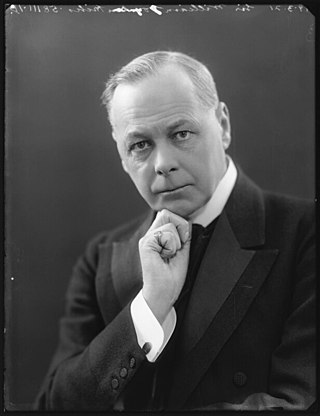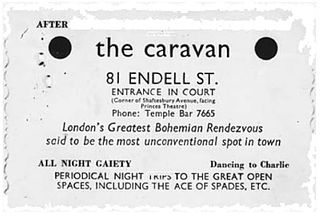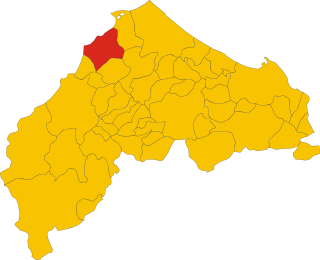Related Research Articles

Scotland Yard is the headquarters of the Metropolitan Police, the territorial police force responsible for policing Greater London's 32 boroughs. Its name derives from the location of the original Metropolitan Police headquarters at 4 Whitehall Place, which had its main public entrance on the Westminster street called Great Scotland Yard. The Scotland Yard entrance became the public entrance, and over time "Scotland Yard" came to be used not only as the common name of the headquarters building, but also as a metonym for the Metropolitan Police Service (MPS) itself and police officers, especially detectives, who serve in it. The New York Times wrote in 1964 that, just as Wall Street gave its name to New York's financial district, Scotland Yard became the name for police activity in London.

Gracechurch Street is a main road in the City of London, the historic and financial centre of London, England, which is designated the A1213.

William Joynson-Hicks, 1st Viscount Brentford,, known as Sir William Joynson-Hicks, Bt, from 1919 to 1929 and popularly known as Jix, was an English solicitor and Conservative Party politician.

Fenchurch Street is a street in London, England, linking Aldgate at its eastern end with Lombard Street and Gracechurch Street in the west. It is a well-known thoroughfare in the City of London financial district and is the site of many corporate offices and headquarters. The name "Fenchurch" means "church in the fenny or marshy ground" and presumably refers to St Gabriel Fenchurch, which stood at the junction of Fenchurch Street and Cullum Street until it was destroyed by the Great Fire.

The Shepherd's Bush murders, also known as the Massacre of Braybrook Street, involved the murder of three police officers in London by Harry Roberts, John Duddy and John Witney in 1966.

St Mary Woolchurch Haw was a parish church in the City of London, destroyed in the Great Fire of London of 1666 and not rebuilt. It came within the ward of Walbrook.

A nightclub is a club that is open at night, usually for drinking, dancing and other entertainment. Nightclubs often have a bar and discothèque with a dance floor, laser lighting displays, and a stage for live music or a disc jockey (DJ) who mixes recorded music. Nightclubs tend to be smaller than live music venues like theatres and stadiums, with few or no seats for customers.
The history of the Metropolitan Police in London is long and complex, with many different events taking place between its inception in 1829 and the present day.

Kate Meyrick known as the 'Night Club Queen' was an Irish night-club owner in 1920s London. During her 13 year career she made, and spent, a fortune and served five prison sentences. She was the inspiration for the character Ma Mayfield in Evelyn Waugh's novel, Brideshead Revisited.

Chinawhite was a nightclub in central London. The original club was located between Piccadilly Circus and Soho, but the club closed in December 2008 due to the building being sold. It re-opened at a new location in London on 20 October 2009 at 4 Winsley Street, in Fitzrovia. In 2012 there was a partial re-brand and name change to "Libertine by Chinawhite". It is part of the wider Chinawhite group which owns and operates a selection of nightclubs, including in Manchester, Birmingham, and Newcastle.
The relationship between race and crime in the United Kingdom is the subject of academic studies, government surveys, media coverage, and public concern. Under the Criminal Justice Act 1991, section 95, the government collects annual statistics based on race and crime.

The Clerkenwell explosion, also known as the Clerkenwell Outrage, was a bombing attack carried out by the Irish Republican Brotherhood (IRB) in London on 13 December 1867. Members of the IRB, who were nicknamed "Fenians", exploded a bomb to try to free a member of their group who was being held on remand at Clerkenwell Prison. The explosion damaged nearby houses, killed 12 civilians and wounded 120; no prisoners escaped and the attack was a failure. The event was described by The Times the following day as "a crime of unexampled atrocity", and compared to the "infernal machines" used in Paris in 1800 and 1835 and the Gunpowder Treason of 1605. Denounced by politicians and writers from both sides of the political spectrum, the bombing was later described as the most infamous action perpetrated by Fenians in Britain during the 19th century. It enraged the British public, causing a backlash which undermined the Irish Home Rule Movement.

The Caravan Club was a gay and lesbian-friendly club in the basement of 81 Endell Street, London, that was the subject of a sensational court case in 1934. Following a police raid, the club's owners were accused of "exhibiting to the view of any person willing to pay for admission lewd and scandalous performances". The Caravan Club was one of a number of similar venues in London's West End in the inter-war years.

Esmeralda's Barn was a nightclub in Wilton Place, Knightsbridge, London, that was owned by the Kray twins from 1960 until its closure in 1963. The Krays used the club as a way of expanding their criminal activities into London's West End.

The Poplar Rates Rebellion Mural is a mural in Hale Street, Poplar, London, London. It is painted on the wall of the depot of Tower Hamlets Parks Department.

The Denmark Place fire occurred on 16 August 1980 at 18 Denmark Place in Central London. The fire, caused by arson, killed 37 people of eight nationalities. Most of the victims were Spanish or Latin American, and were patrons of two unlicensed bars in the building. At the time, The Sunday Times said the fire could be "the worst mass murder in British history".

Finchley War Memorial is located in Ballards Lane, North Finchley, outside the United Services Club. It was unveiled by Viscount Lascelles on the 13th November 1925, an event that was attended by thousands of people. The memorial is dedicated to 1,000 servicemen and women from Finchley who died in World War I. After the ceremony, dignitaries addressed a tightly packed gathering in the St Kilda Hall. Finchley sent over five thousand men to the Colours. Finchley United Services Club

121 Centre was a squatted self-managed social centre on Railton Road in Brixton, south London from 1981 until 1999. As an anarchist social centre, the venue hosted a bookshop, cafe, infoshop, library, meeting space, office space, printing facility, and rehearsal space. Organisations using the space included Food Not Bombs, Anarchist Black Cross prisoner aid chapters, an anarcho-feminist magazine, a squatters aid organisation, and an anarchist queer group. Regular events at 121 Centre included punk concerts, a women's cafe night, and a monthly queer night. The centre kept a low profile and was one of the longest-lasting squats in London.

The Corinaldo stampede was a fatal crowd crush that occurred on 8 December 2018 at the Lanterna Azzurra nightclub in Corinaldo, Marche, Italy. Six people were killed and 59 injured.

The Metropolitan Police Specialist Training Centre is a specialist training centre for the Metropolitan Police (MPS) in Gravesend, Kent. It provides both Public Disorder and Specialist Firearms training to officers drawn from the MPS, British Transport Police and City of London Police.
References
- 1 2 Chinatown London, History through the ages Archived 2009-12-07 at the Wayback Machine
- ↑ B, Lizzie (24 June 2021). "Kate Meyrick (1875-1933)". Women Who Meant Business. Retrieved 30 April 2022.
- ↑ Archives, The National (20 April 2022). "The National Archives - Jix's 'war on night club evils'". The National Archives blog. Retrieved 30 April 2022.
- ↑ Archives, The National. "The National Archives - The 43 Club in pictures". Portals. Retrieved 30 April 2022.
- ↑ Archives, The National. "The National Archives - Kate Meyrick - 20 People of the 20s - 20sPeople". Portals. Retrieved 30 April 2022.